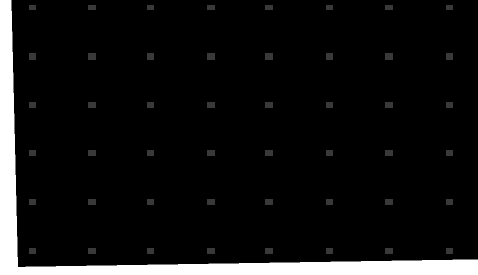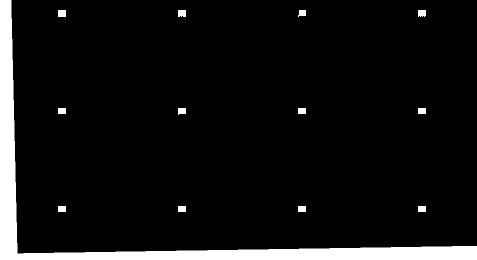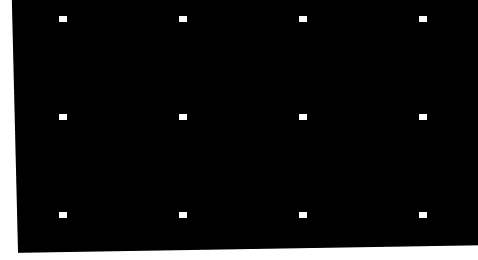FSAA – SuperScene AntiAliasing
One rendering feature that can greatly influence the quality of the final output is that of Full Screen AntiAliasing. 3Dlabs took Anti-Aliasing one step further than previously seen on the PC with Wildcats SuperScene FSAA. SuperScene AA boasts a sample output of up to 16 subsamples per pixel along with dynamic sample allocation.
To take a look at Wildcat III’s FSAA we’re going to use Henrik ‘Basic’ Gustavsson’s FSAA testing application.
For those not familiar with the application below is the basic output of the application without any AnitAliaising applied:

The near horizontal and near vertical edges clearly display aliasing artefacts, and we can see how effective the FSAA rendering is on these edges. However, the regular white block pattern can also be used to determine what sort of AA is actually being applied. Below is Henrick's explanation of what the application does and how it achieves it:
"The near vertical and near horizontal edges are just full white poly edges with a full black background. High contrast edges are of course available in just about any game. But not that high contrast, and not between two guaranteed single colored surfaces.The white dots in the middle come from a textured quad. The texture is 16x16 and all black, except for one white dot. Texture filtering is nearest (= no filtering), and mipmaping is off. But if you could look behind the scene, the texture actually isn't wrapped 4 times. The program measure the width and height of the window, and wrap the texture width-4 and height-4 times in respective direction. This puts quite a high stress on texture coordinate calculation precision (which can be seen in the "jaggies" on the dots). But if it doesn't break down completely, the folding distortion according to Nyquists' Theorem will magnify the sampling pattern to repeat four times over the window. The trick is not to see how the FSAA samples the texture, but how the white dot in the texture samples the SS-pattern.
In short, we have a super-sampling sample pattern magnifying glass."
Now, lets use the application to have a look at some outputs from a few other cards FSAA. First we'll look at KYROII's 4X FSAA:

What we can clearly see here is that the white spots have double in frequency in both the horizontal and vertical planes – it is consistent with regular ordered grid Super-sampling. Super-sampling take multiple samples of not only the sub pixels but also the textures as well, in essence everything is sampled 4 time in this case.
The following is an image taken with GeForce4’s straight 4X AA:

Now, as we can see here the white spots are of the same frequency as those of the image without AA, however by looking at the near vertical / horizontal edges it is evident that AA is occurring. The reason for this is that in GeForce4 NVIDIA utilises Multisampling AA; although multisampling is a full screen FSAA technique it does not have any effects on textures, so although multiple subpixel samples are taken they will have no effect on the internals of a polygon since the texture sample is distributed across all the samples, the samples only display a difference at the polygon edges to give the anti aliasing effect. Its for this reason that the FSAA test application displays no differences with the pattern of the white spots.
Now, the following is the output from the Wildcat III 6110 with 16 sample SuperScene AA forced on:

If you can draw your attention away from the fact that the near horizontal/vertical edges look shockingly clean then you’ll note that the pattern of the white spots also displays no change in frequency from the shot with no AA applied – this tells us that 3Dlabs are indeed operating true Multisampling and only one texture sample is taken for all the pixel sub-samples.
